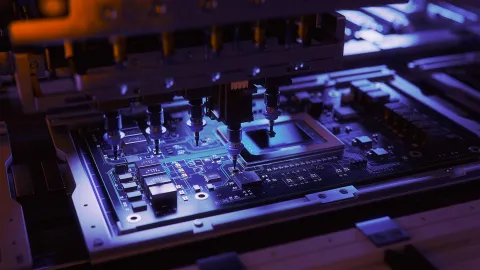How banks can be smarter than the fraudsters in 2021

Fraud is as old as money itself, but digital banking, remote working and COVID-19 have all acted like rocket-fuel to propel recent strong growth in fraud worldwide. According to fraud watchdog ACFE, nearly four out of five banks saw an increase last year. And the situation seems likely to deteriorate further. In the same survey, nine out of 10 respondents expected to see fraud grow in the coming 12 months.
In the past, the financial cost of fraud to banks in terms of losses and transaction monitoring was significant but manageable. In KPMG’s most recent survey into global banking fraud, the majority of respondents recovered less than 25 percent of their losses to fraud.. Of greater magnitude is the amount banks spend on operational teams to monitor transactions and then investigate and mitigate fraud attacks. However, beyond these financial costs, fraud can be catastrophic to a bank’s reputation: who wants to bank with an institution known to have been vulnerable?
Ballooning costs demand efficient responses
With fraud rising, regulators and banks can no longer see it as an intrinsic cost because the risks are too high. In response, regulators are trying to get the sector to do more to protect their customers, their reputations and their businesses. In Singapore, for example, MAS, the central bank , has started to recommend that banks implement fraud-transaction monitoring. In the UK, regulators have introduced a new voluntary banking code of conduct that ultimately means more customers will be reimbursed for fraudulent payments. Last year also saw the introduction of “confirmation of payee” regulations that force a bank to tell a customer if the name of the person they think they are paying doesn’t match that of the beneficiary account. More jurisdictions around the world are likely to follow.
While increased fraud prevention and mitigation will certainly protect customers and banks, it also means operational costs will balloon unless monitoring can be made more efficient and effective. We believe that 2021 will be the year when banks do just that – and finally beat the fraudsters.
“Banks running fraud-prevention software that incorporates collective artificial intelligence can cut fraud monitoring costs by 77 percent, helping them meet new regulations efficiently and effectively, and stop fraudsters in their tracks.”
The benefit of real cost analysis
The only way banks can monitor the increasing number of transactions is to invest in automation and intelligent solutions. Over the coming months, more will turn to proven, scalable, real-time systems that raise alerts and block transactions before they are complete. These systems will help keep costs down, improve the banks’ detection rates, and give customers what they want – friction-free banking.
Banks already using smart, artificial intelligence-based fraud-prevention software are seeing extraordinary savings in terms of operational costs. One bank using NetGuardians software has seen a 77 percent fall – and it has spotted and stopped more fraud than before. We will see even better results as more banks use smart AI and share genuine payment behavior.
Collective artificial intelligence
We know that sharing information between banks about fraud allows for better fraud protection. NetGuardians’ collective AI facilitates this by recording and sharing genuine payment behavior from customers across multiple banks rather than focusing on and trying to spot known fraudulent IBAN numbers and IP addresses, for example. Integrated into powerful transaction monitoring tools, the software raises alerts about suspicious activity in real time, enabling highly effective fraud prevention – between 20 and 30 percent more effective, according to a study by NetGuardians. In addition, by checking a transaction that has been flagged as suspicious with customers, under the new regulations the banks will be able to pass on the liability should a fraud subsequently be proven to have taken place, further reducing risk to themselves.
But for this approach to be watertight, it will not be enough for banks to have efficient fraud alert systems. They will need to use explainable AI so they can share with customers and regulators their processes and decisions to demonstrate clear reason for concern.
As this year progresses, more banks will adopt this type of technology, drawn to its comprehensive fraud-prevention capabilities, its affordability and scalable protection. That is why we believe 2021 will be the year when banks with the right technology beat the fraudsters.
Discover how NetGuardians can protect your payments in 2021.



